SEPTEMBER WILDFLOWERS
9/20/20
September is the month of tall plants covered with yellow flowers. There’s also a few that are less common, less obvious, and take a little searching. These are the flowers of September.
Yellow Crownbeard (also called Southern Crownbeard, Verbesina occidentalis). These plants have been growing taller and taller all summer long, and they are finally blooming, being covered in yellow flowers. The opposite leaves of Yellow Crownbeard are wider near their base, making them almost triangular. This plant is common along roadsides all through town.
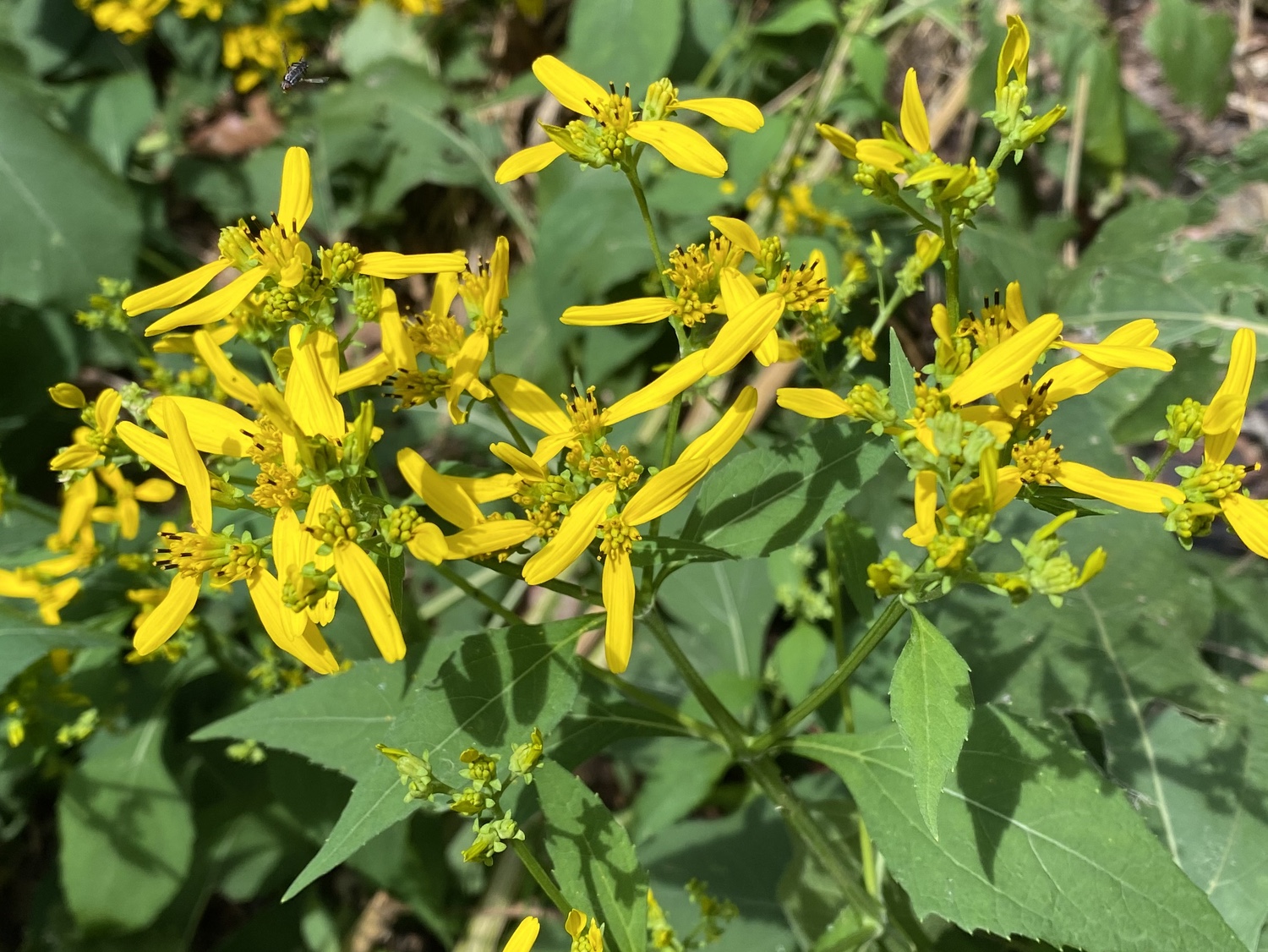
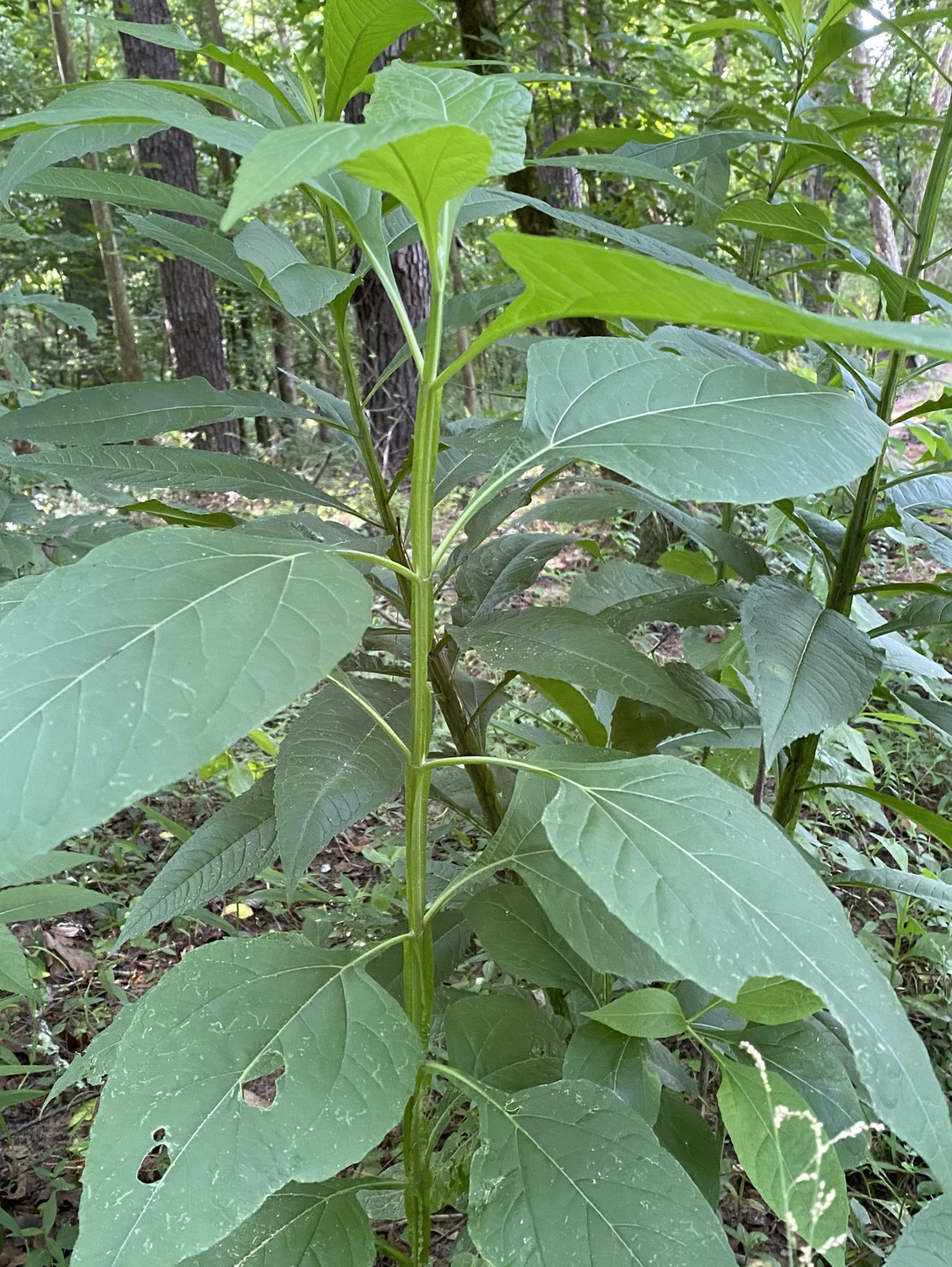
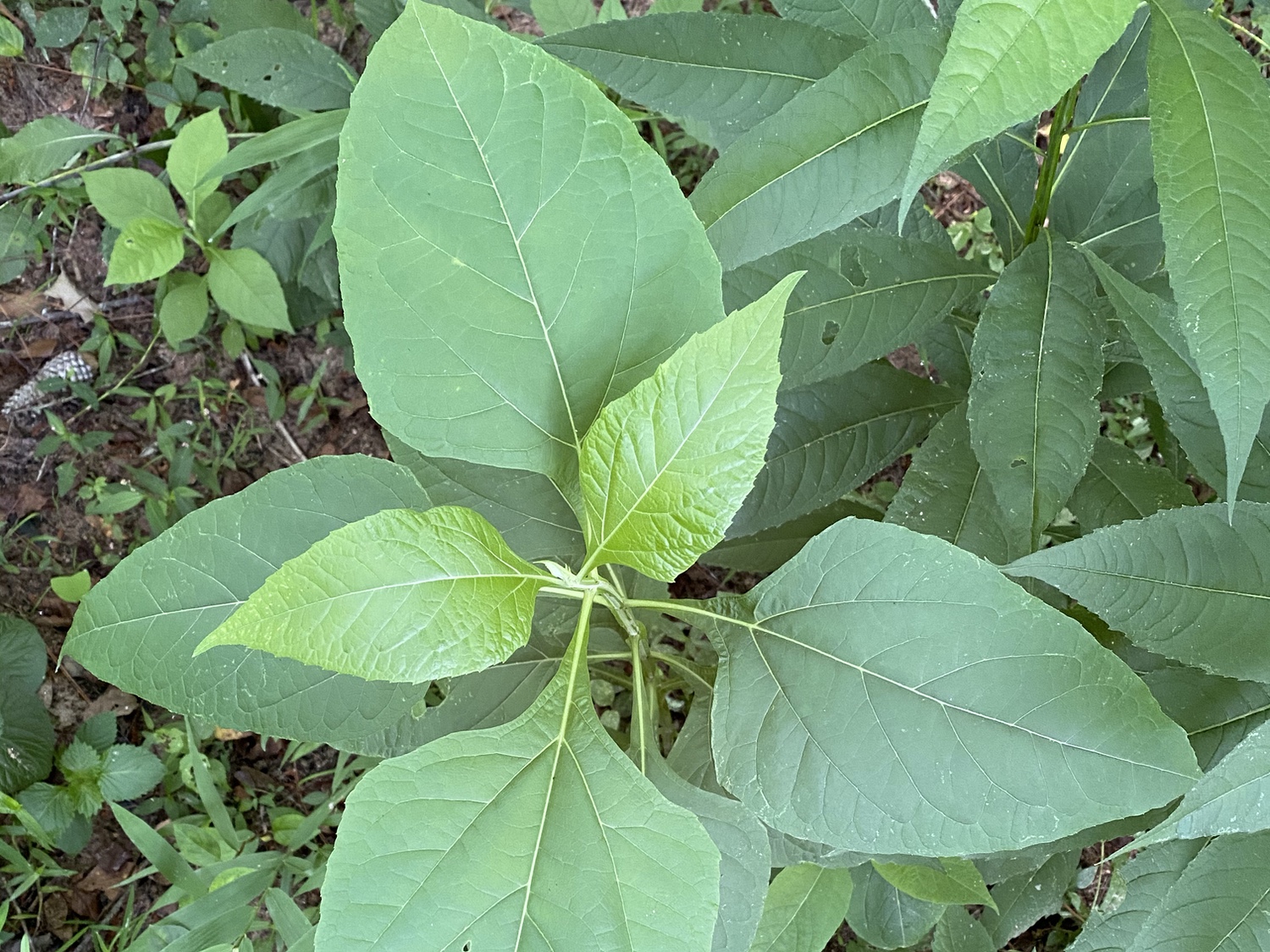
Wingstem (Verbesina alterniflora). I haven’t yet seen these blooming, but they should be around. Wingstem looks very much like Yellow Crownbeard, except that the leaves are much narrower, elongate, and alternate. It often grows together with Yellow Crownbeard, such as along the river at the UGA Botanical Gardens.

Tall Goldenrod (Solidago altissima). These tall plants (up to 6') are blooming in many places along the roadside; these are from Riverbend Road, opposite the UGA bus barn. The flowers are yellow, tiny, and densely packed along the ends of the stems. The stems are hairy, and the leaves are long, narrow, and nearly stemless.
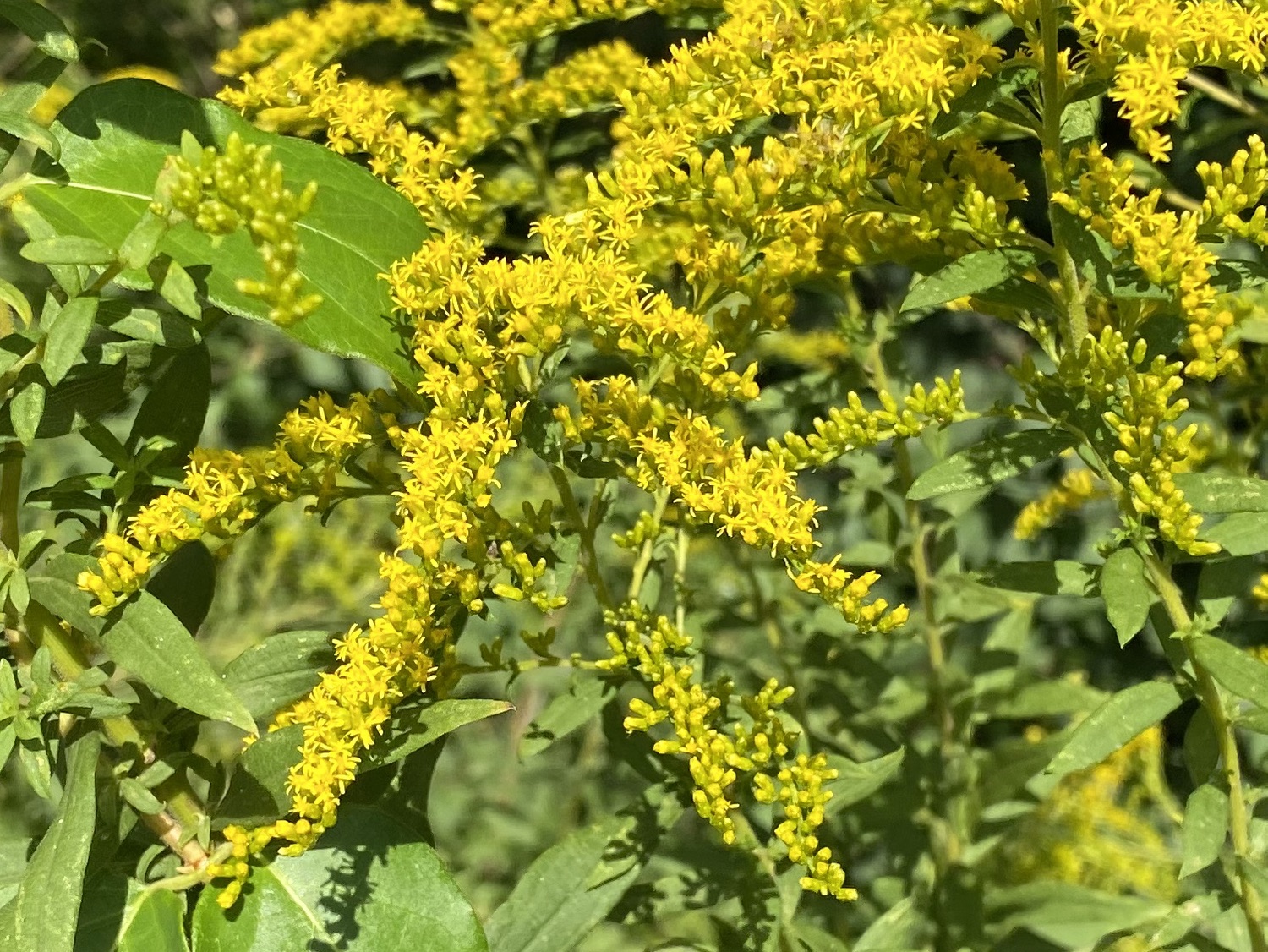
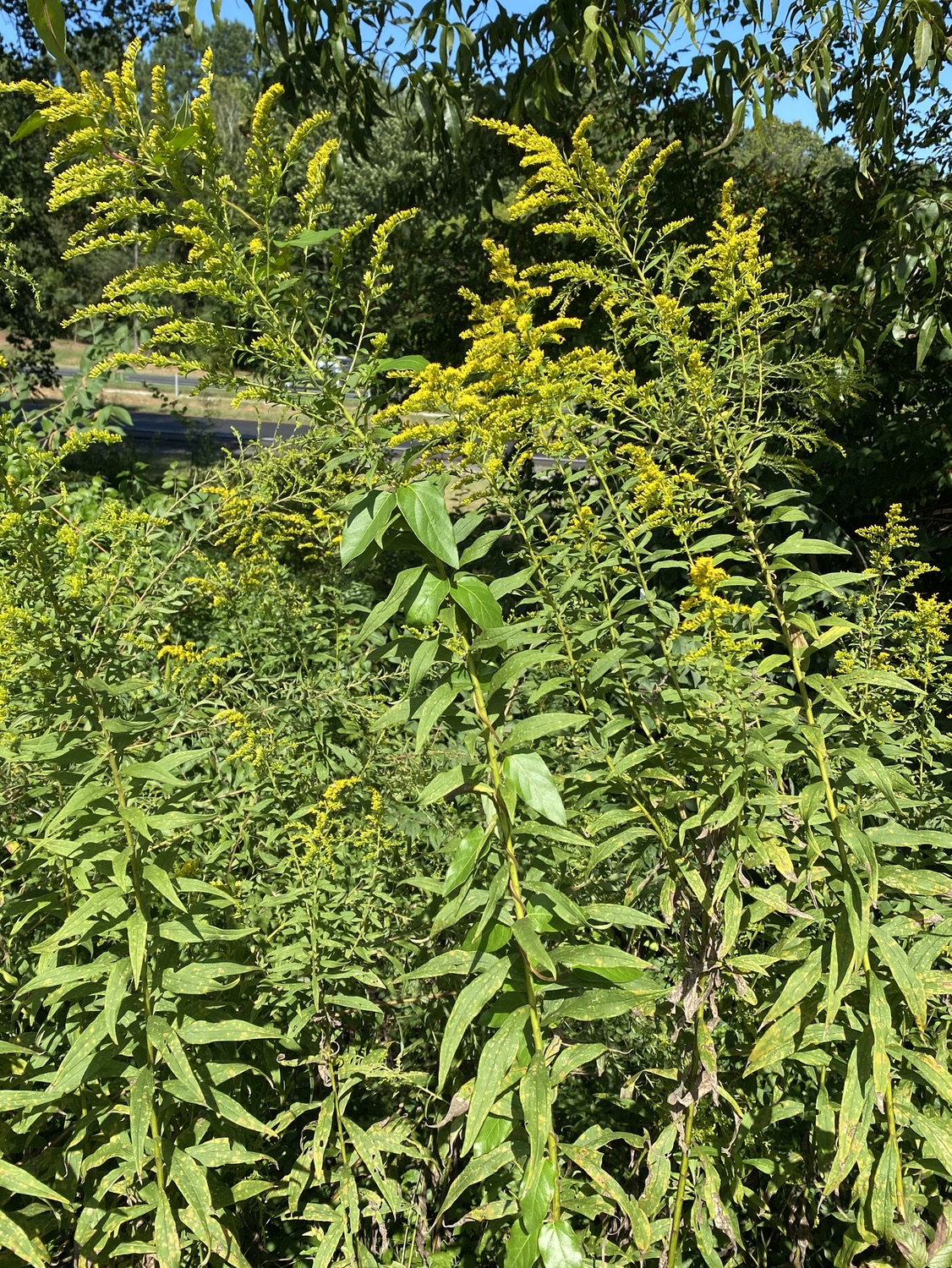
Camphorweed (Heterotheca latifolia). Several of these are growing along Riverbend Road, near the UGA bus barn, close by the Tall Goldenrod. The plant is erect and 3–4' tall. The compound yellow flowers have about 25 ray flower and numerous smaller yellow to slightly orangish-yellow flowers in the central disk. The bracts form overlapping series on the base of each flower, which grow in clusters at the ends of stems. The stem is hairy and grooved. The leaves are also hairy, wide (hence the species name), stiff, and ruffled along their edges.
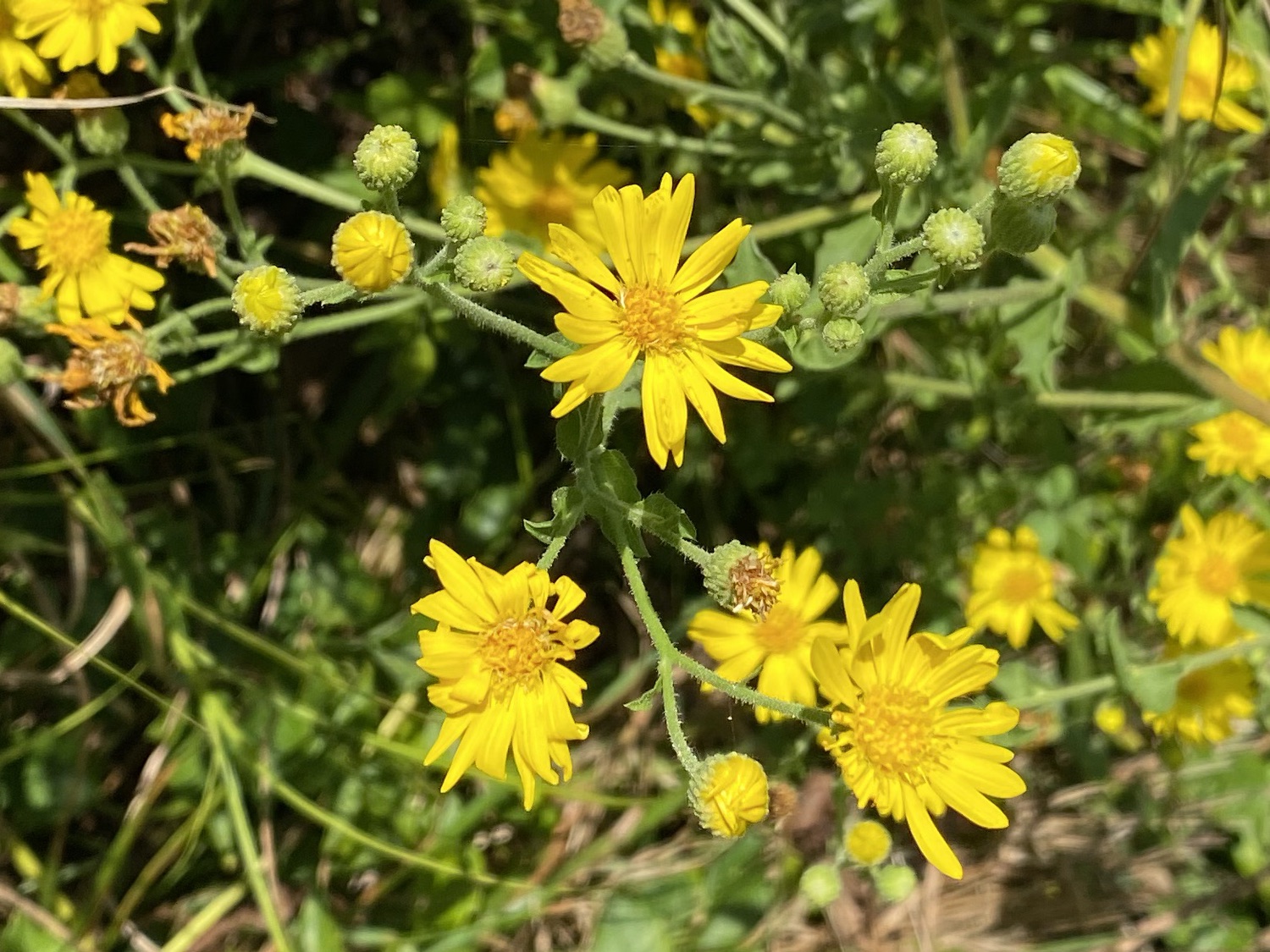
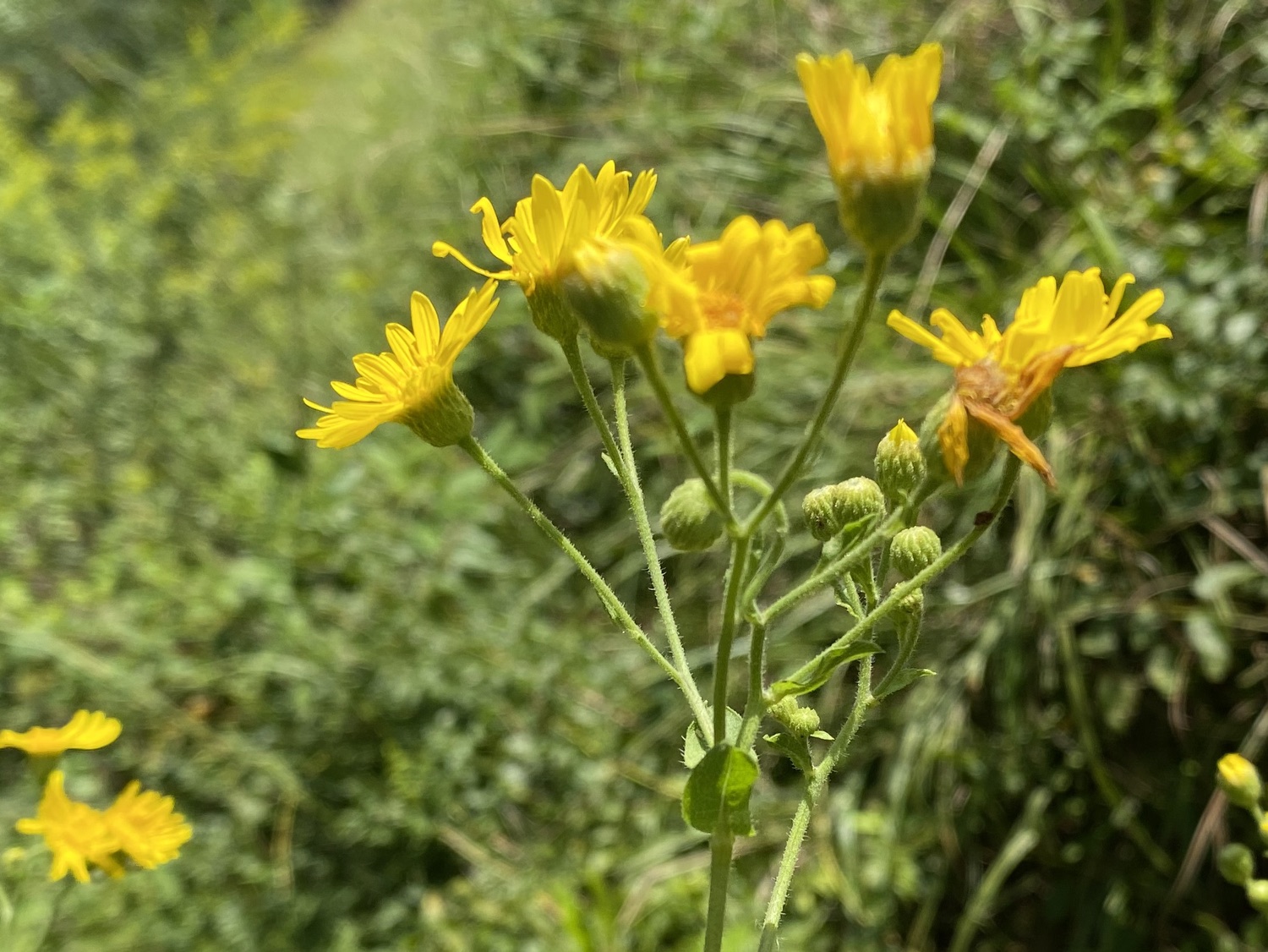
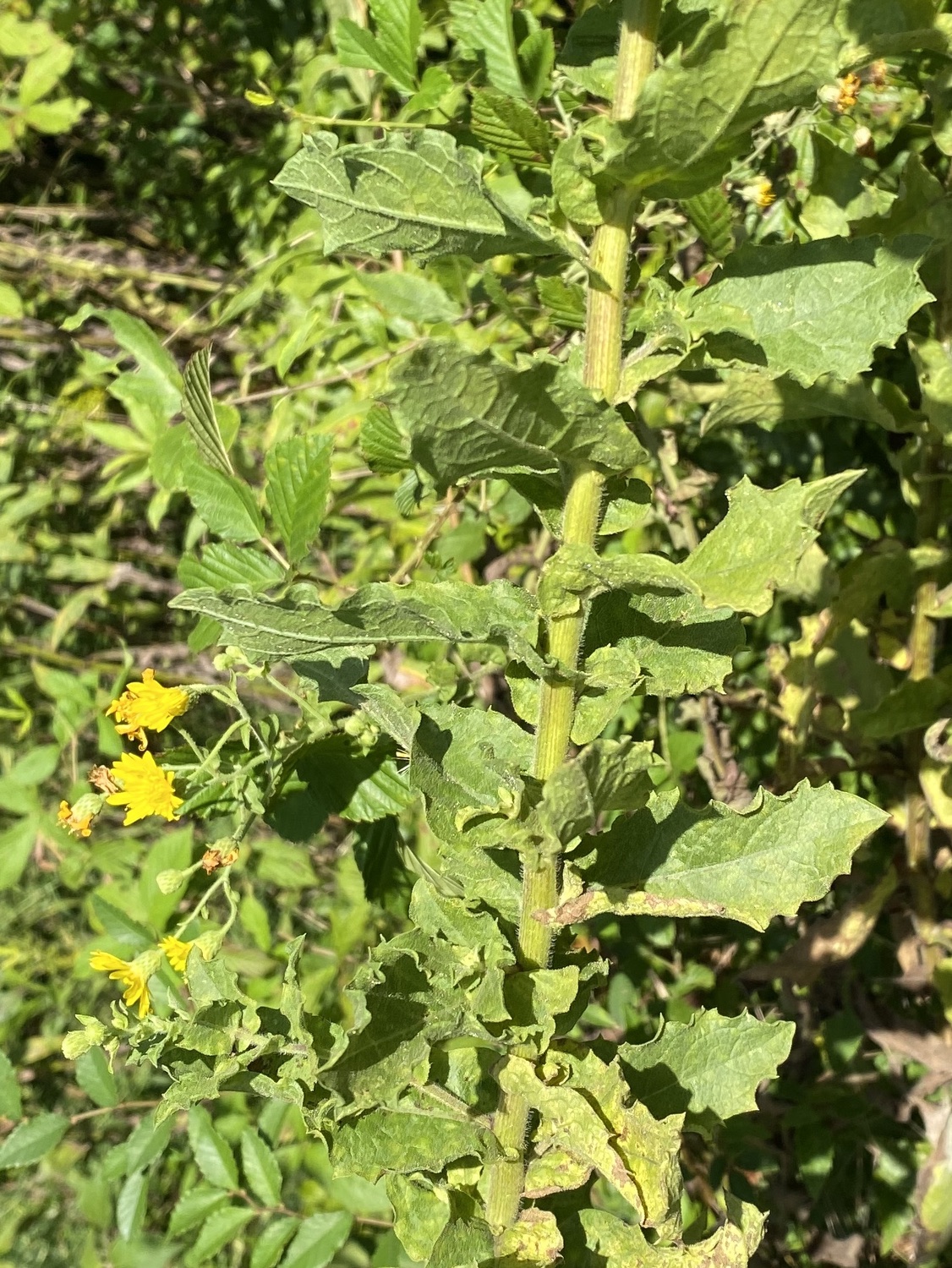
Grass-leaved Golden Aster (also called Silk-Grass, Pityopsis graminifolia). One clump of these bright yellow flowers is growing just down the street from us. The plant is about 1½' high, with stems terminated by clusters of lemony yellow compound flowers bearing 8–10 ray flowers surrounding a central cluster of flowers. The stems bear alternate narrow leaves that are held tightly to the stem. The basal cluster of leaves is grass-like (so much so that I didn’t realize at first that it was associated with the flowers).
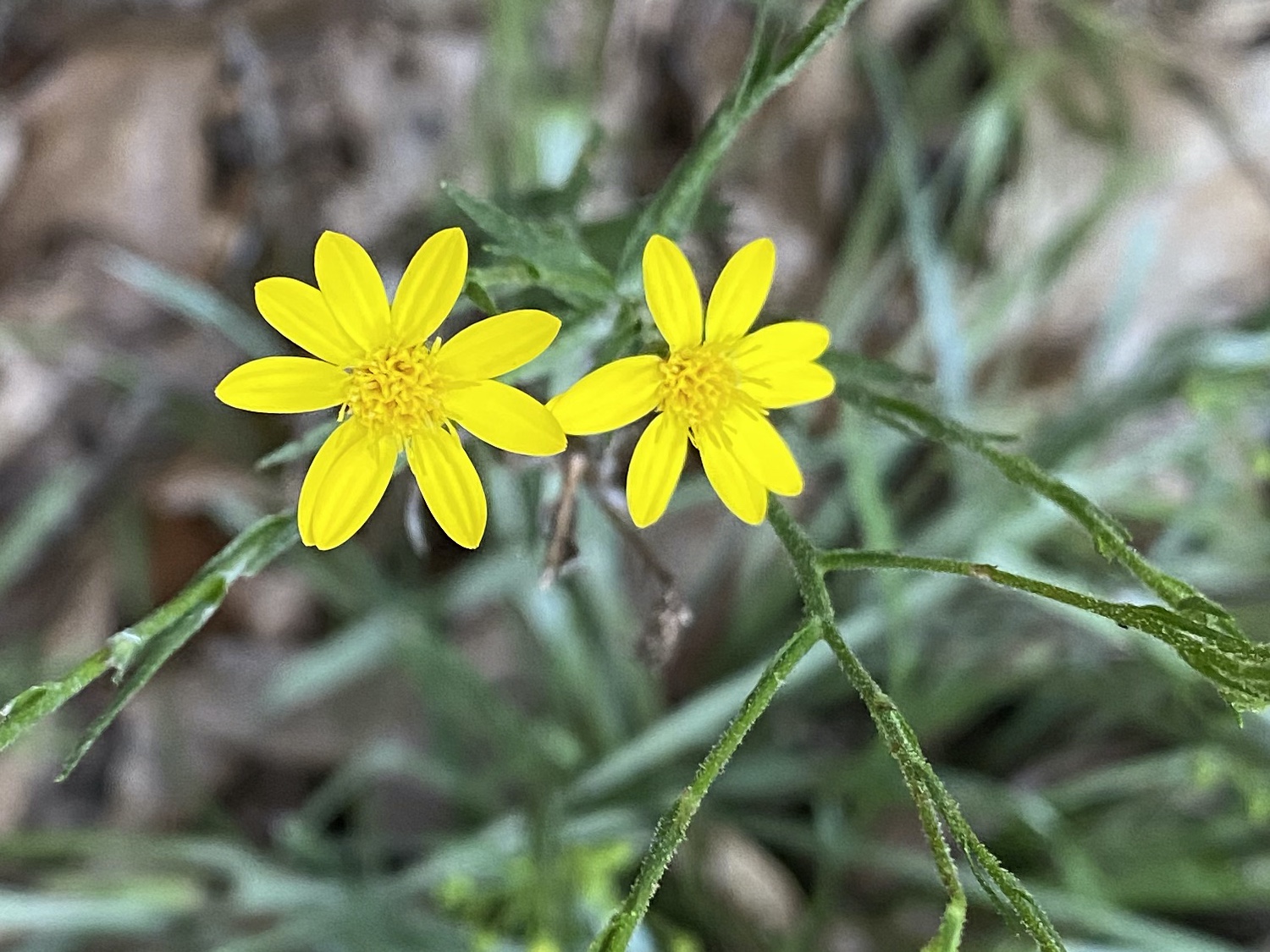
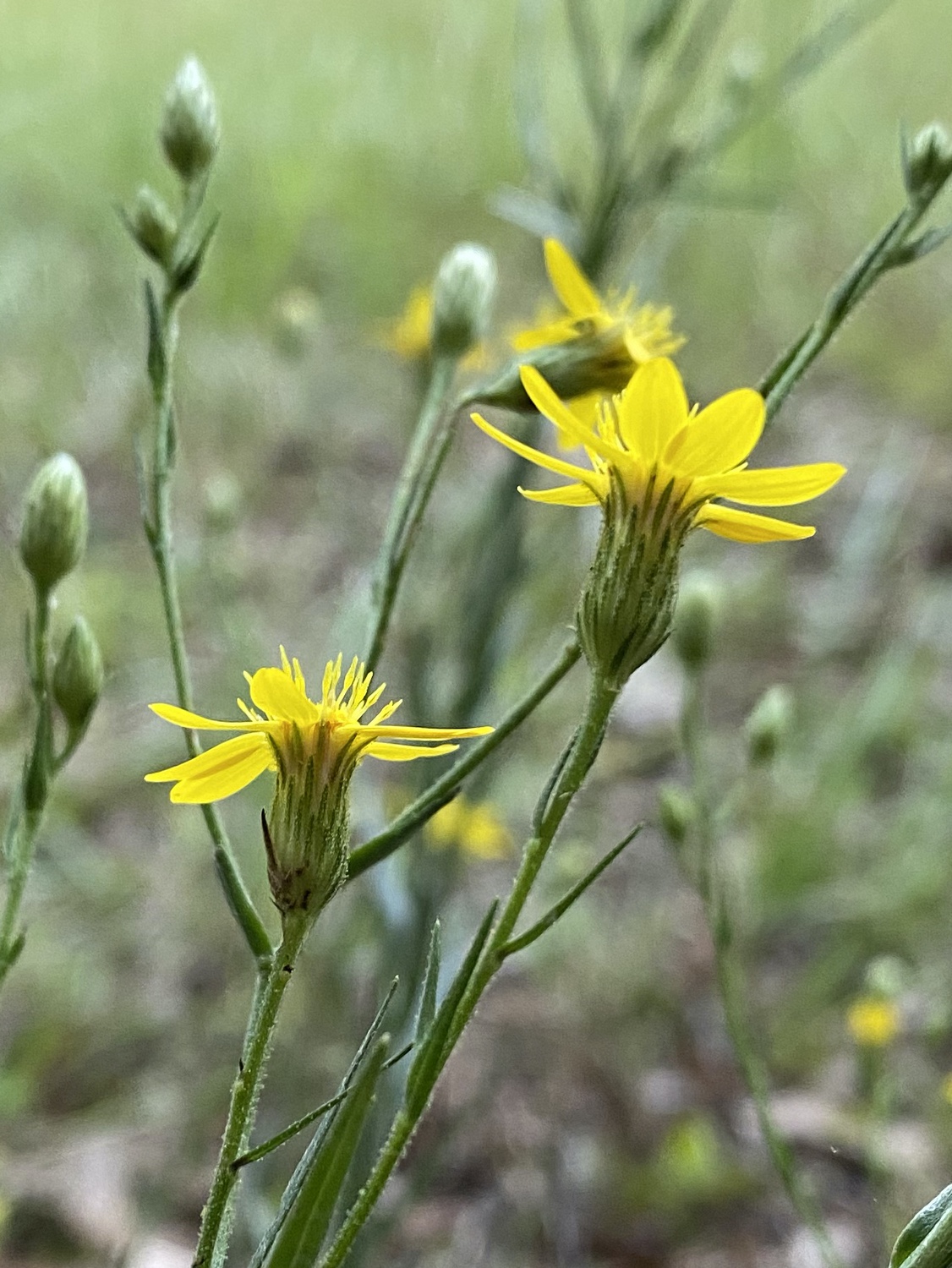
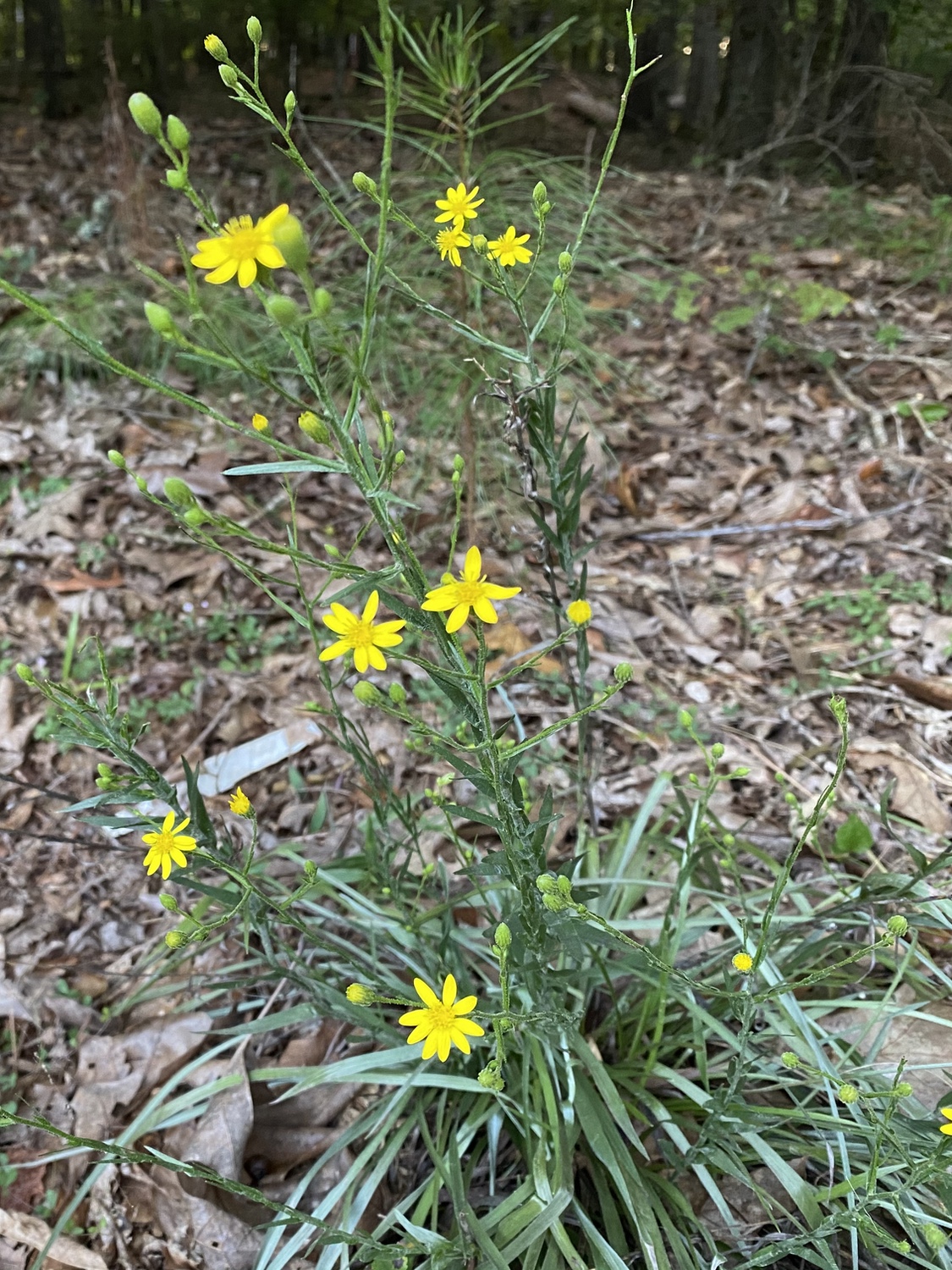
Kudzu (Pueraria montana). For as obvious as Kudzu is, taking over whole trees and hillsides, the flowers are not apparent from a distance. Up close though, they consist of clusters of pink to lavender flowers.

Carolina Horse-nettle (Solanum carolinense). This has been blooming all summer long, and the blooms have given way to the poisonous tomato-like fruits.
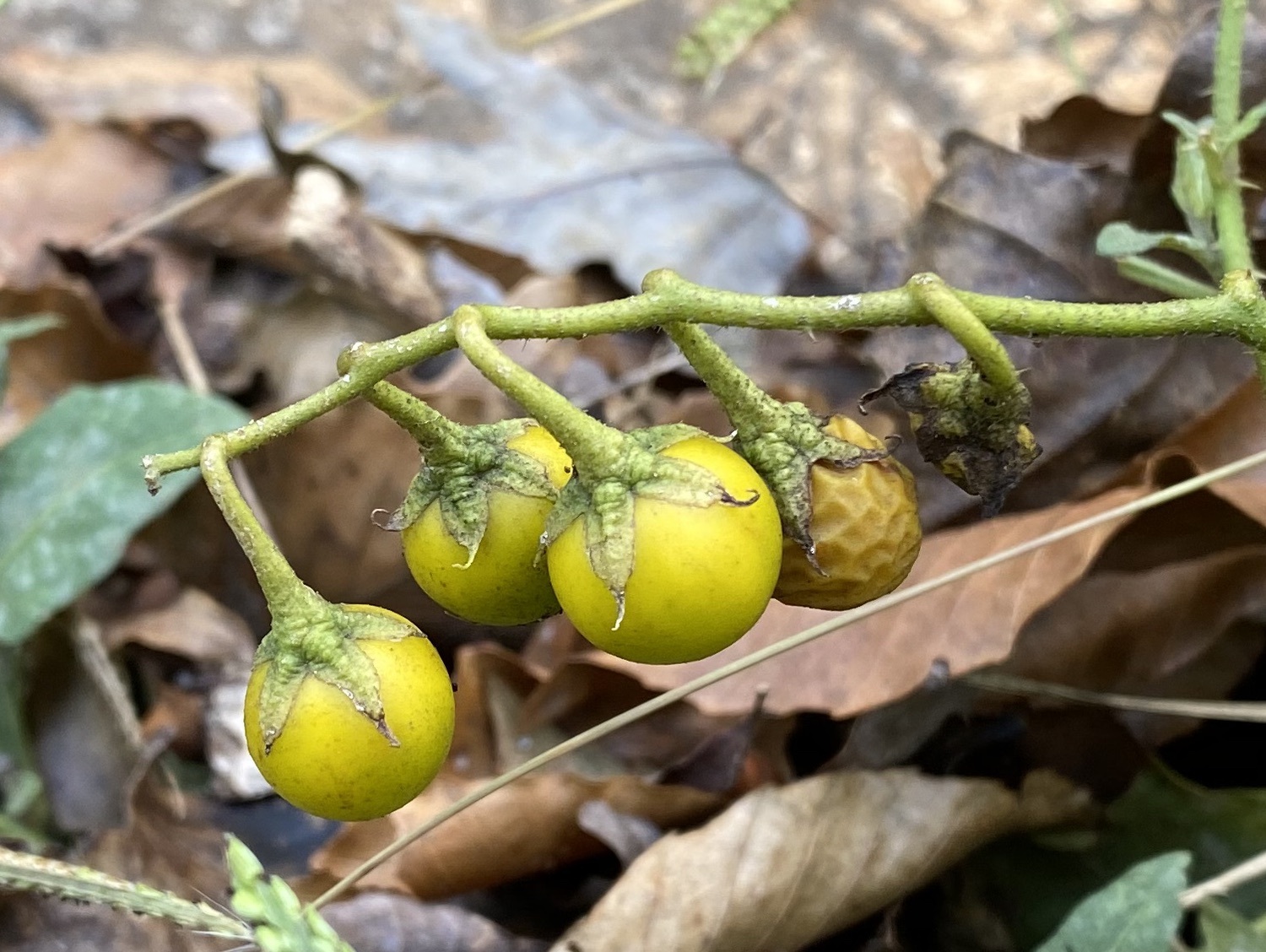
Red Morning Glory (also called Scarlet Creeper, Ipomoea coccinea). This is quickly recognizable as being in the morning-glory family, with its heart-shaped leaves, trumpet-shaped flower, and its twining growth. The brilliant orange flowers are small compared to many of the other morning glories, being only about 1½" across. The center of the flower is yellow, with several white-tipped anthers. These were growing in the power-line cut along our street, and I&squo;ve several more, all in disturbed areas.

Virginia Buttonweed (Diodia virginiana). I saw this in July at the power-line cut at the UGA Botanical Gardens, and these are from the power-line cut along our street and adjacent mowed areas. The flowers are small and the plant is inconspicuous; it is easily overlooked. The brown stems are hairy, with opposite hairy leaves; the plant overall is sprawling, staying low within mowed areas. The flowers are small (½" across), have four petals, and long white stamens.
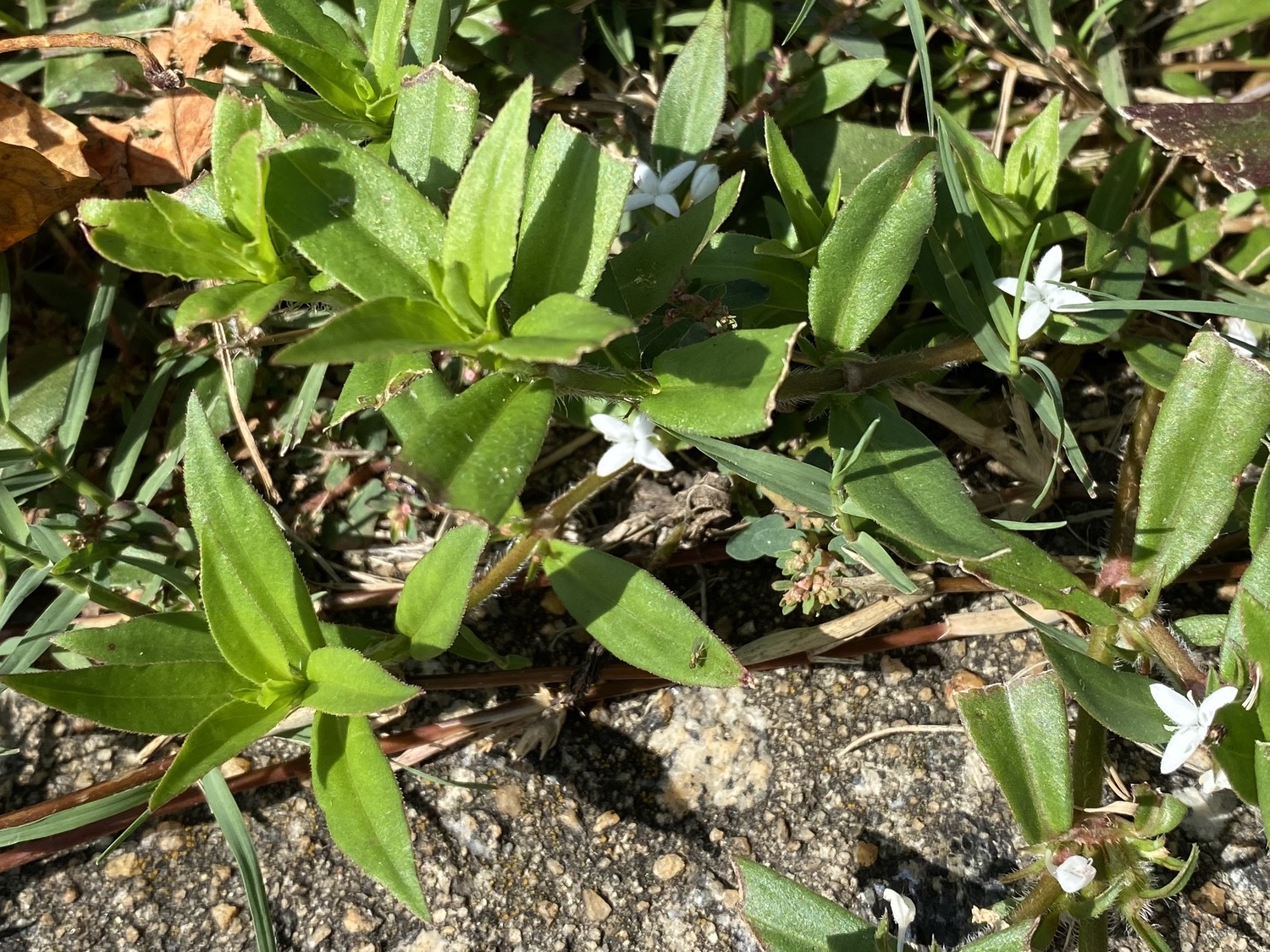
Pennsylvania Smartweed (Persicaria pensylvanica, formerly Polyganum pensylvanicum). The flowers on this last one are pink and in dense clusters at the end of the stems. The leaves are elongate and opposite, nearly stalkless, and the plant is less than a foot tall. These are uncommon; I found two plants growing along our street.

References
Chafin, L.G. 2016. Field Guide to the Wildflowers of Georgia and Surrounding States. The University of Georgia Press, Athens, Georgia.
Duncan, W.H., and M.B. Duncan. 1999. Wildflowers of the Eastern United States. The University of Georgia Press, Athens, Georgia.
Miller, J.H., E.B. Chambliss, N.J. Loewenstein. 2015. A Field Guide for the Identification of Invasive Plants in Southern Forests. USDA Forest Service, Southern Research Station, General Technical Report SRS-119, 126 p.